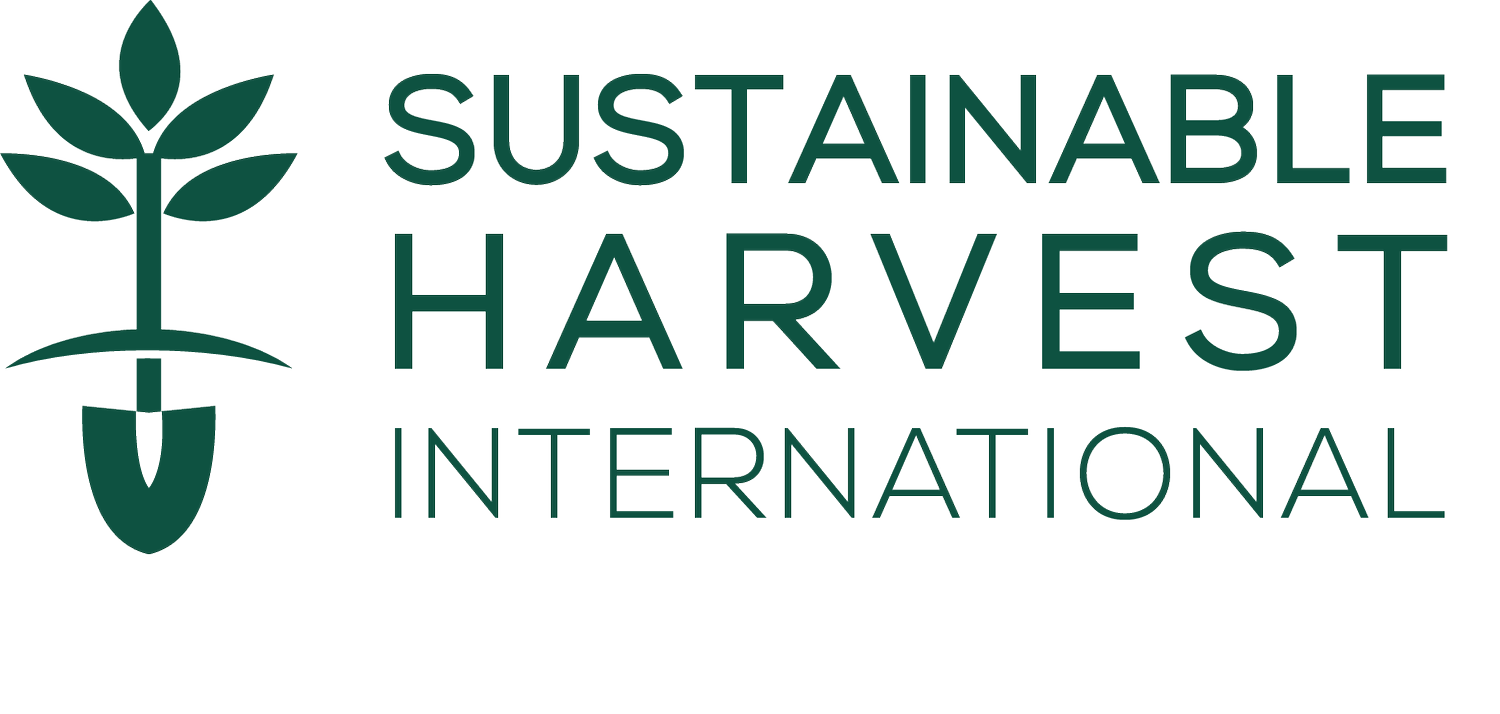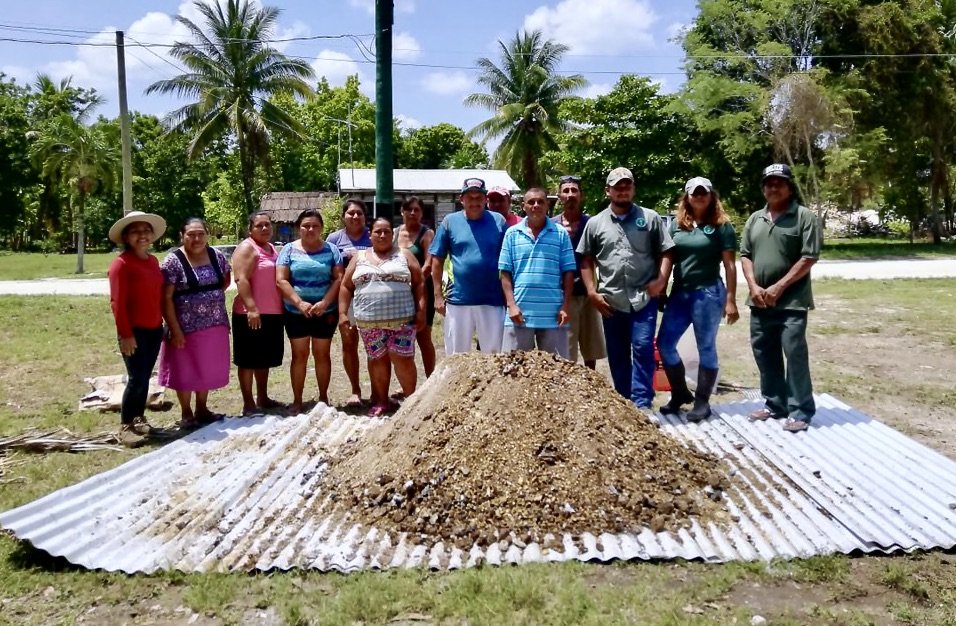At Sustainable Harvest International (SHI), we practice natural and organic farming methods that restore soil health and increase food yields. We believe in opting for sustainable practices that nourish communities and the Earth. Our methods minimize the use of toxic chemicals that degrade the land and weaken a farmer’s ability to grow food. One powerful tool SHI farmers use to improve food production is an organic fertilizer called bokashi.
Two farmers in SHI's Belize program work together to create bokashi.
We love compost, but sometimes farmers need a fertilizer that works faster to support plant growth. That’s where bokashi comes in. Unlike traditional compost, which is aerobic and takes longer to break down, bokashi is anaerobic, meaning it doesn’t need oxygen to function. This solid, organic fertilizer ferments quickly thanks to beneficial microorganisms embedded in the recipe.
Bokashi helps protect plants from harmful bacteria and enhances their ability to absorb nutrients—ensuring plants get more of what they need to thrive. It’s rich in nutrients and microorganisms, making it an effective recipe for restoring soil health and boosting plant growth.
While bokashi is available in stores, we teach SHI farmers how to make their own to support the self-sufficiency of their families and communities. Our recipe uses only local materials—all of which grow on or near their land—and produces results quickly, meeting the urgent needs of farming families.
SHI’s Bokashi Fertilizer Recipe
Ingredients
Measurements are for about 500 lbs of bokashi. This recipe makes a large quantity, but it can be easily adjusted for more limited quantities.
150 lbs chopped sugarcane – main carbon and sugar source.
80 lbs bean husk – adds nitrogen (N), phosphorus (P), and potassium (K).
150 lbs animal manure – we use well-decomposed manure.
25 lbs of white lime – neutralize acidity.
30 lbs charcoal or biochar – improves microbial activity.
3.78 L molasses – boosts fermentation.
20 L Efficient Microorganisms (EM) – we gather these from nearby forests.
80 L of well or rain water, dechlorinated – enough to achieve 30–40% moisture.
Preparation
SHI farmers often work together to prepare it, then distribute the finished product amongst themselves.
Layer the solid materials (chopped sugarcane, bean husk, animal manure, and charcoal), and then mix them in a clean, shaded area.
In a bucket, mix molasses and EM into the well or rain water.
Slowly pour the liquid mix into the solid mix while turning. Aim for a moisture level where you can squeeze the mixture and it holds its shape but doesn’t drip water.
Pile the mix into a heap no taller than 1 meter.
Cover with a tarp or sack to keep it warm and anaerobic (partially covered but not airtight).
After three days, uncover the bokashi pile, turn and mix the ingredients and check the moisture level. After mixing, cover the pile again. Check the pile every few days to prevent overheating, which could kill beneficial microbes, and to ensure fermentation.
After 21 days, it's ready!
SHI's Belize Field Trainers teach the community of Patchakan how to make bokashi.
Application
Apply half a pound per plant.
Before planting a seed or seedling, mix the bokashi into the soil, then cover it with topsoil.
Water the soil after applying.
Application Tips
Store in a cool, dry place if not used immediately.
Preferably use within three months of production to ensure a high percentage of microorganisms in the fertilizer.
Avoid using chemically treated manure or materials with high salt.





